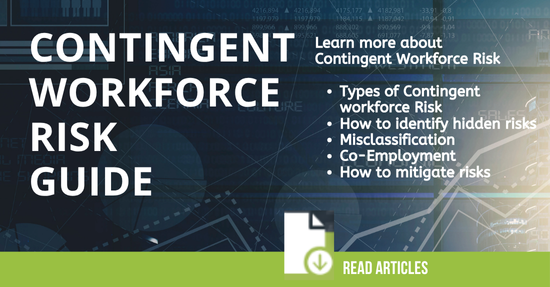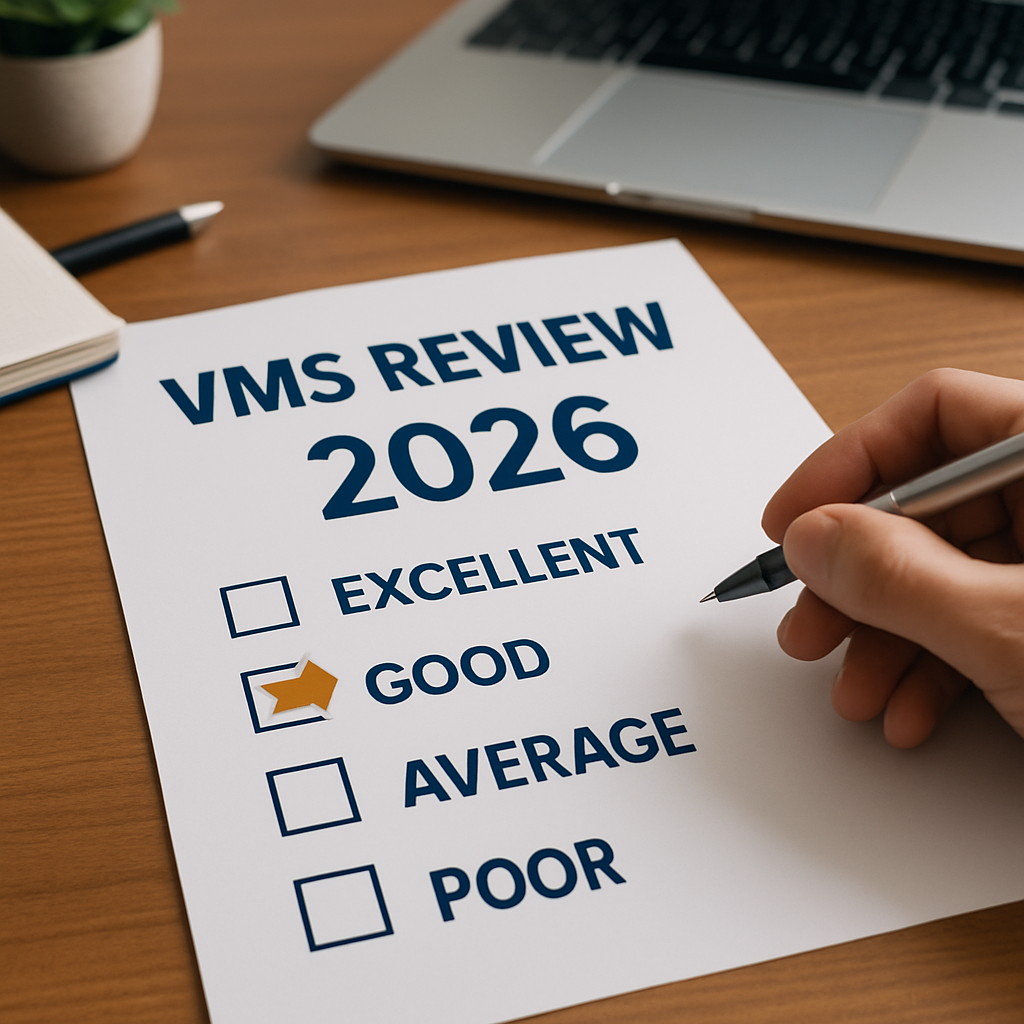An increasing number of businesses are embracing contingent labor to reduce payroll costs, address skill gaps, boost workforce flexibility, and enhance the quality and effectiveness of their talent acquisition efforts. In this article, we delve into strategies for organizations to manage and minimize compliance risks associated with their contingent workforce.
There are many benefits that come with a contingent workforce, however organizations can only truly access them when they have a robust contingent workforce program in place. Something many companies are still struggling to implement.
In fact, many organizations are still using manual spreadsheets and fragmented processes to manage their contingent workers. This is leading to risks that run through their business, such as rogue spend, poor staffing agency performance and hiring managers engaging contingent workers on their own terms and at their own rates.
Another prominent risk that organizations which manage contingent workers need to be mindful of is complying with employment regulations.
What is Contingent Workforce Compliance? And Why is it Important?
Within any contingent workforce program, it’s crucial that contingent workers are managed according to their status - as a non-employee manner and in a different way to the way traditional employees are managed.
If mismanaged, contingent workers can fall under co-employment or misclassification compliance regulations, leaving the organization that hires them subject to hefty fines and lawsuits.
How to Mitigate Contingent Workforce Compliance Risk
There are some ways that businesses can mitigate contingent workforce staffing compliance risk. Let’s take a look at some of the key actions that can be taken.
1- Ensure you understand the workforce regulations in the regions that your business hires contingent workers
Typically, workers are presumed to be an employee unless the organization that contracts with them can prove three things:
- The worker is free from control and direction in the performance of services.
- The worker is performing work outside the usual course of the business of the hiring company.
- The worker is customarily engaged in an independently established trade, occupation or business.
However, employment laws vary drastically depending on where a worker is hired. That’s why businesses must do everything they can to stay up-to-date with the local employment laws in the areas in which they are hiring workers.
This can be difficult as the difference between a contingent worker and a traditional employee isn’t always clear and classification laws vary in each country, state and even city.
Most jurisdictions, however, have online tests. Taking these tests can help your business understand local employment regulations as well as determining whether a worker falls under the employee or contingent category for new hires.
2- Use a vendor management system to manage your contingent workforce program
To build a highly-strategic contingent workforce program, the implementation of a vendor management system (VMS) is crucial. This will reduce risk in all areas of your contingent workforce management strategy.
When it comes to compliance, a vendor management system will mitigate risk by maintaining all of your information in one place. In the event of an audit or review or your contingent workers, businesses will be able to access the VMS and provide the information needed to prove that they comply with employment regulations.
In addition, a vendor management system allows businesses to create controls - such as approvals - to ensure all hiring managers are following the same processes to mitigate contingent workforce compliance risks.
Read more at: 10 Ways a VMS helps improves Compliance
3 - Define compliance processes for hiring managers
To ensure your organization is mitigating contingent workforce compliance risk, it’s important that you implement standardized processes for hiring managers. To do this, you need to define the compliance processes that your hiring managers need to complete for all workers. Break this down into categories such as the requirements needed for a specific position or location.
4- Enforce all hiring managers to complete these compliance processes
It’s all well and good having standardized processes written down, but not if they aren’t being implemented by your hiring managers. A vendor management system can help here as well.
Through the use of a vendor management system your business can automate many of the processes associated with onboarding and offboarding contingent workers. By using automation to make it easy for hiring managers to complete compliance processes, you’ll better ensure completion of important compliance tasks.
5- Conduct contingent workforce program audits
To ensure your contingent workforce program is mitigating compliance risk both now and in the future, it’s important to ensure your processes are both up-to-date and being implemented properly. You can double check this by organizing audits of your program each quarter.
Frequent audits of your program will allow your organization to examine that both your hiring managers, and your vendors, are performing the appropriate compliance processes based on your organization’s specific requirements and standards. This will help you identify which areas of your program may be putting you at risk, so you can fix them before it’s too late.
Learn more about How to Choose the Right VMS
Learn more about the Benefits of a VMS and what to look for when choosing the best VMS for your organization. Download our Free VMS Buyer's Guide here:
Discover the Power of Conexis VMS
Conexis VMS is purpose-built for organizations seeking to manage their contingent labor spend effectively. Here’s why we're the right choice:
- Fast Deployment: Get up and running in weeks, not months
- Transparent Pricing: Flexible pricing with no hidden costs
- White-Label Ready: Customize the platform with your brand
- Real-Time Insights: Make faster decisions with built-in analytics
- Audit-Ready Compliance: Store contracts, worker data, and rates in one secure hub
About Conexis VMS
Conexis is an award-winning Vendor Management System built for organizations that want the power of enterprise software without the complexity or cost.
Leveraging the latest technology, Conexis delivers the expertise, reliability and security of enterprise systems, while offering the flexibility, user friendliness and tailored, personal service you require. Learn more about our Company and why organizations Choose Conexis VMS.
Looking to Switch Your VMS or Just Getting Started?
Whether you are looking to Switch your VMS, or just Getting Started, we are here to help. Contact Us for a Free No-Obligation Consultation, See how Easy Conexis is to use by taking a quick 2 minute Self-Guided Online Demo, or Book a Personal Demo Today!
Additional articles on the Managing Contingent Workforce Risk: Managing Risk Guide
- Co-Employment Risk: How a VMS Shields you from Risk
- Misclassification: A Critical Risk for Contingent Workforce Programs
- 10 Ways a VMS helps reduce Contingent Workforce Compliance
- How to Identify the Hidden Risks in Your Contingent Workforce Program
- How to Track Contingent Workforce Compliance Risk with a VMS
- What is Contingent Workforce Compliance Risk?
- Is your Staffing Agency putting your company at risk?
- The Benefits and Risks of Hiring Contingent Workers
- The Top 5 Contingent Workforce Risks and How to Manage them
- How a VMS keeps you compliant and audit-ready







